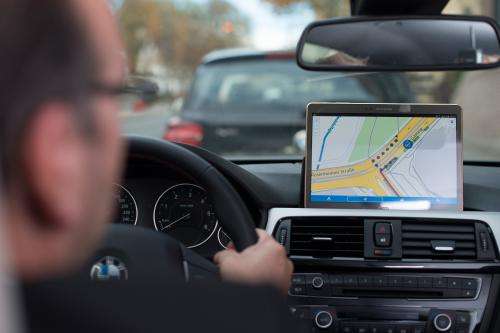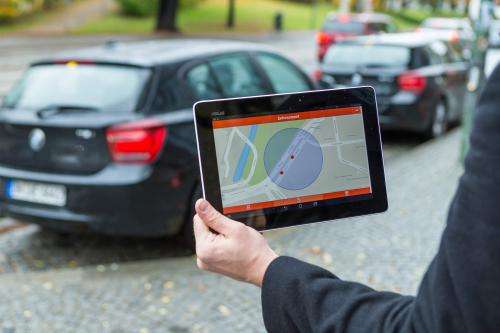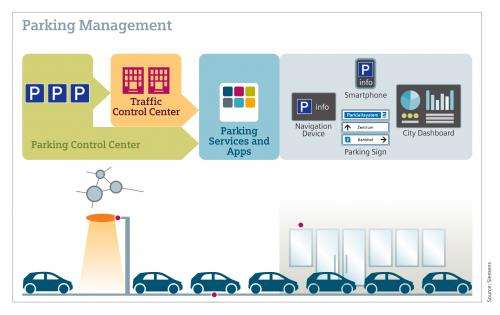Radar sensors support parking management

Siemens is researching the use of sensor networks in an advanced parking management solution that will hopefully counter the increasing parking space crisis in cities. The online magazine Pictures of the Future reports about this solution, which will be used this spring for the first time in a pilot project in Berlin. In this concept, sensor networks collect information about the parking situation in cities. The information is forwarded to the drivers in order to make it easier for them to find unoccupied parking spaces. In addition, the data is transmitted to a parking management center so that cities can intelligently manage their parking spaces.
Because the new parking management system can integrate a variety of sensor types and technologies, it can adapt itself to the specific requirements of every neighborhood. A new feature is a radar sensor that is installed facing downward in street lamps or on the walls of houses, from where it can determine which parking spaces are occupied.
Sensor can detect several cars
When installed high up, the radar sensor can scan a larger area and thus detect several cars parked in a row. Because it also scans bicycle paths and entryways, it helps users quickly determine whether dangerously parked vehicles obstruct traffic. The fist-size sensor emits microwaves that are reflected back to it by streets and cars.
The measurement data is transmitted by mobile radio to a control center, which computes parking space occupancy and forwards this information to the operators of navigation and route-planning apps, for example, as well as to the planners of parking management systems. An integrated RFID solution also detects authorizations such as the passes for residents, taxis, handicapped people, and carsharing, electric, and delivery vehicles. It also enables traffic control officers to be immediately notified if parking spaces are occupied by unauthorized individuals. In the future, the RFID solution might also enable people to pay for parking completely automatically and by the minute.

The parking management system's central software always thinks ahead and recognizes when parking situations repeat themselves at certain times. For example, it navigates drivers to unoccupied parking spaces not only on the basis of real-time data, but also on computed forecasts. This information lets navigation systems direct drivers to areas with a greater proportion of unoccupied parking spaces before they even begin looking for a parking space. In addition, the system can suggest to drivers that they switch to public transportation at suitable locations.
Nowadays, up to 30 percent of all traffic is produced by drivers looking for a parking space. On average, drivers travel around 4.5 kilometers to make such a search. As a result, a system that reduces parking pressures in urban areas and makes the search for parking spaces easier is not only a blessing for tired drivers, it also helps make cities safer and cleaner

Provided by Siemens



















